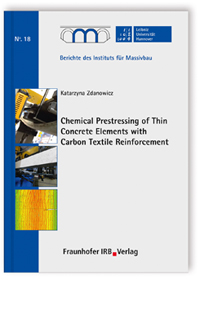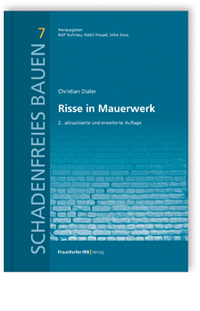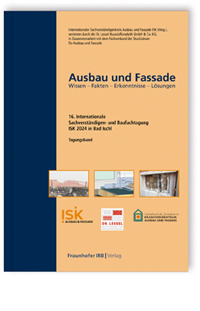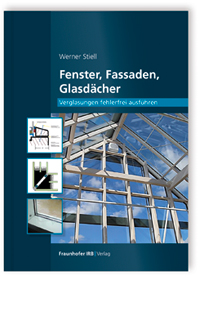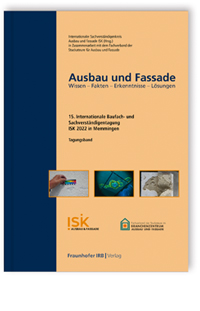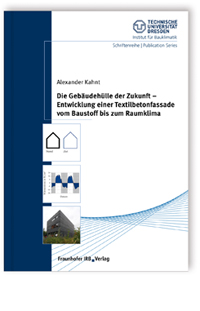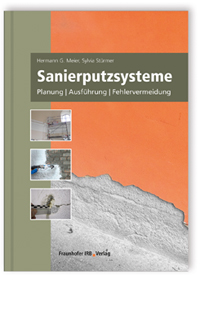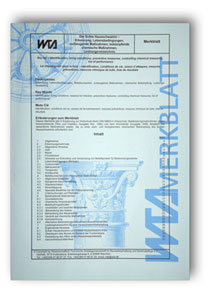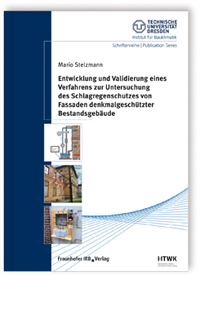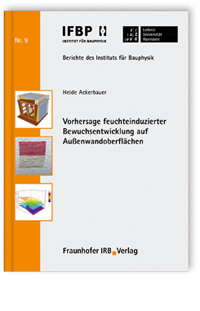Chemical Prestressing of Thin Concrete Elements with Carbon Textile Reinforcement (Softcover)
Details zur Dissertation
Autor
Katarzyna Zdanowicz
Erscheinungsjahr
2021
Herausgeber
Leibniz Universität Hannover, Institut für Massivbau, Nabil A. Fouad
Bibliografische Angaben
169 Seiten, zahlr. Abb. u. Tab.
Softcover
Fraunhofer IRB Verlag
ISBN 9783738806342
Sprache
Englisch
Die Vorspannung des Betons mit nichtmetallischer Bewehrung ist ein Bereich des Bauingenieurwesens, der zunehmend an Bedeutung gewinnt.
Für Textilbewehrung, die aufgrund der geometrischen Form und Struktur für die Vorspannung besonders herausfordernd ist, stellt die Technologie der chemischen Vorspannung, bei der Quellzemente anstelle mechanischer Vorrichtungen zur Einleitung von Spannungen verwendet werden, eine alternative Lösung dar.
Im Rahmen dieser Arbeit wurden Quellbetonelemente mit Textilbewehrung auf uniaxiales Zugverhalten, auf Verbund- und Biegeverhalten untersucht. Die Messungen der Dehnungen über die Zeit und die Untersuchungen des Verhaltens der Probekörper bestätigten, dass die chemische Vorspannung von Bauteilen mit Textilbewehrung erreichbar ist. Die eingeleiteten Spannkräfte und der Einfluss der Vorspannung auf den Grenzzustand der Gebrauchstauglichkeit mit Schwerpunkt auf der Risslast wurden quantifiziert.
Prestressing of concrete with non-metallic reinforcement is an emerging field in structural engineering. For textile reinforcement, because of its geometrical form and structure, a chemical prestressing technology where expansive cement is used to induce stresses instead of mechanical devices, comes as an alternative yet promising method.
The behaviour of expansive concrete members with carbon textile reinforcement was experimentally assessed in uniaxial tensile, pull-out and flexural tests. Measurements of expansion in time and results of subsequent loading tests have confirmed that chemical prestressing of elements with textile reinforcement can be realized. The introduced prestressing forces were quantified and the influence of prestressing on serviceability limit state with a focus on cracking load was analysed.
Für Textilbewehrung, die aufgrund der geometrischen Form und Struktur für die Vorspannung besonders herausfordernd ist, stellt die Technologie der chemischen Vorspannung, bei der Quellzemente anstelle mechanischer Vorrichtungen zur Einleitung von Spannungen verwendet werden, eine alternative Lösung dar.
Im Rahmen dieser Arbeit wurden Quellbetonelemente mit Textilbewehrung auf uniaxiales Zugverhalten, auf Verbund- und Biegeverhalten untersucht. Die Messungen der Dehnungen über die Zeit und die Untersuchungen des Verhaltens der Probekörper bestätigten, dass die chemische Vorspannung von Bauteilen mit Textilbewehrung erreichbar ist. Die eingeleiteten Spannkräfte und der Einfluss der Vorspannung auf den Grenzzustand der Gebrauchstauglichkeit mit Schwerpunkt auf der Risslast wurden quantifiziert.
Prestressing of concrete with non-metallic reinforcement is an emerging field in structural engineering. For textile reinforcement, because of its geometrical form and structure, a chemical prestressing technology where expansive cement is used to induce stresses instead of mechanical devices, comes as an alternative yet promising method.
The behaviour of expansive concrete members with carbon textile reinforcement was experimentally assessed in uniaxial tensile, pull-out and flexural tests. Measurements of expansion in time and results of subsequent loading tests have confirmed that chemical prestressing of elements with textile reinforcement can be realized. The introduced prestressing forces were quantified and the influence of prestressing on serviceability limit state with a focus on cracking load was analysed.
- Introduction
-
- Motivation
- Research objectives
- Scope of the research
- Thesis outline
- I THEORY
- Chemical prestressing
-
- Phenomenon of chemical prestressing
- History
- Field applications
- Codes and guidelines
- Expansive Materials
-
- Expansive cements and admixtures
- Factors influencing expansion
- Influence on compressive strength
- Influence on bending crack resistivity
- Creep of expansive concrete
- Long-term behaviour and durability
- Mechanism of expansion
- II EXPERIMENTAL RESEARCH
- Experimental programme
-
- Programme of experimental research
- Materials and specimens nomenclature
- Specimens
- Concrete parameters
-
- Compressive strength
- Modulus of elasticity
- Tensile Strength
- Expansion measurements
-
- Measurement methods
- Results of free expansion measurements
- Results of RET measurements
- Results of measurements with DFOS
- Summary
- Pull-out and tensile tests
-
- Pull-out tests
- Tensile tests
- Summary
- Flexural tests
-
- Beam specimens
- Mid-scale slabs with textile reinforcement
- Large-scale slab specimens
- Summary
- Discussion and conclusions
-
- Fulfillment of research objectives
- Overall performance index
- Outlook
- A Large slab specimens – additional results
- B Beam specimens – additional results
- C Tensile specimens – additional results
